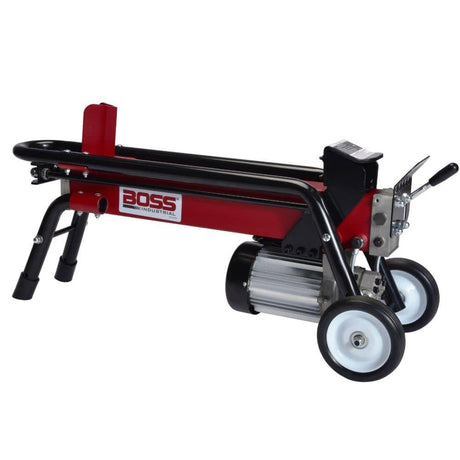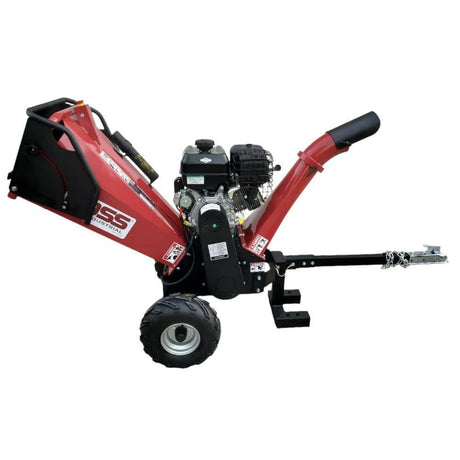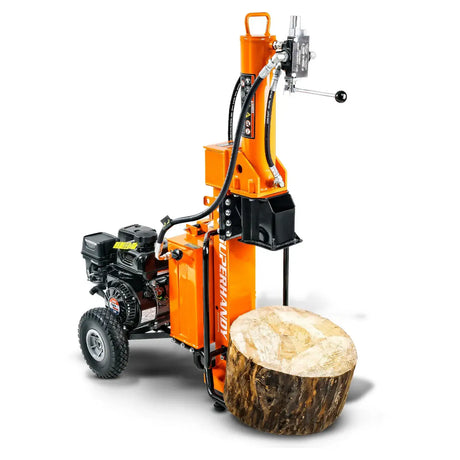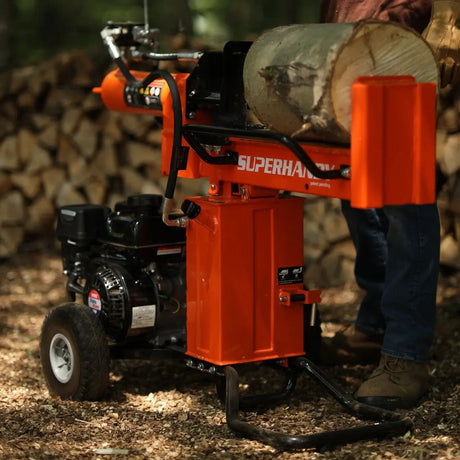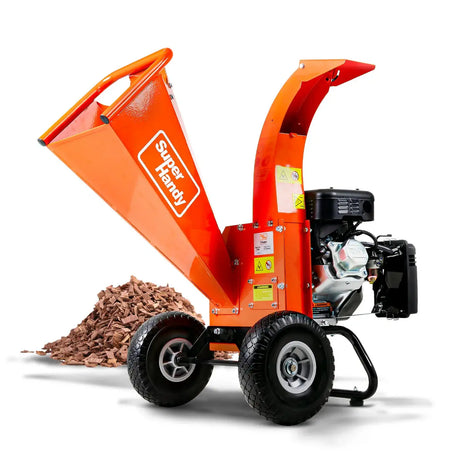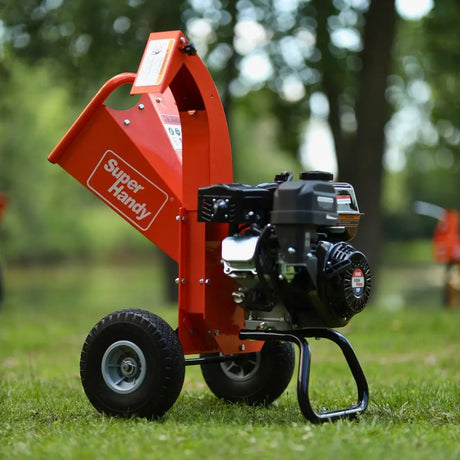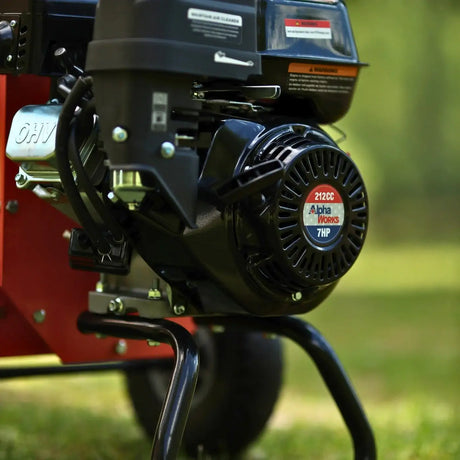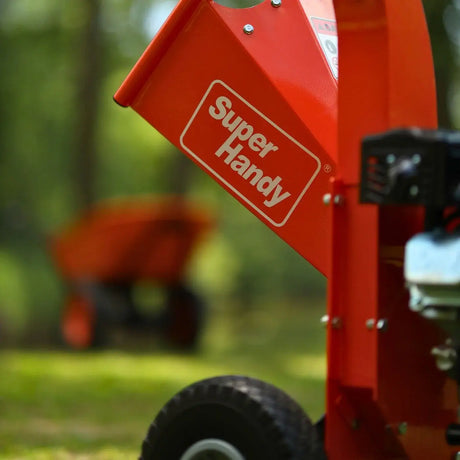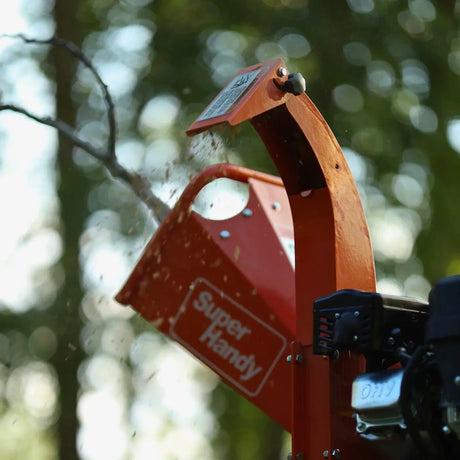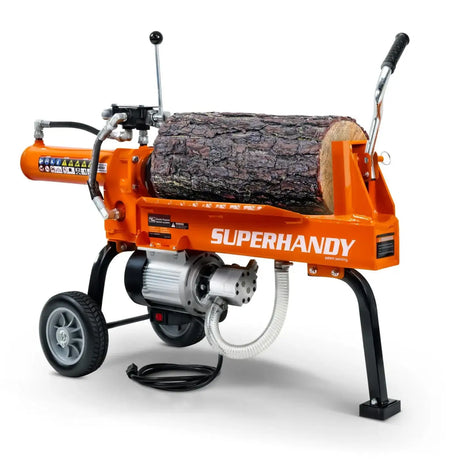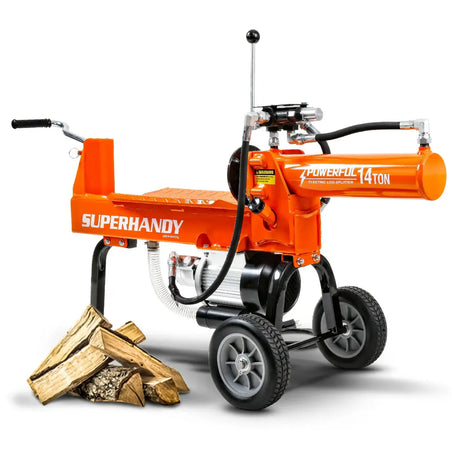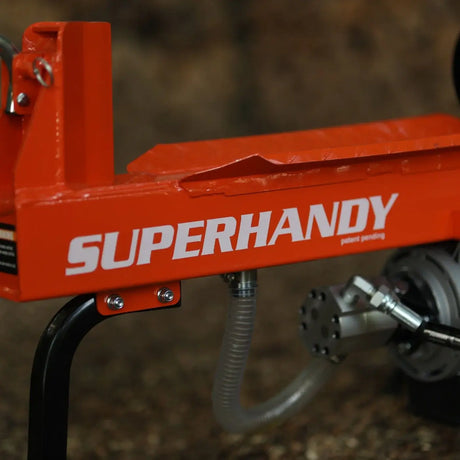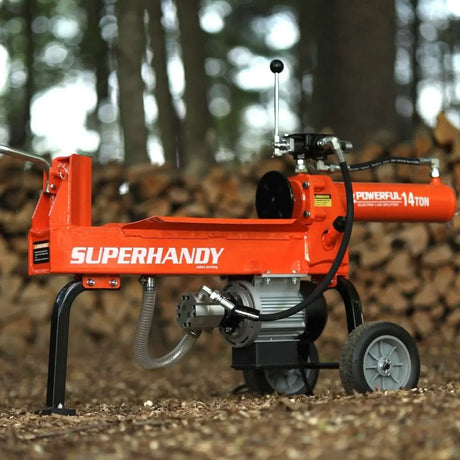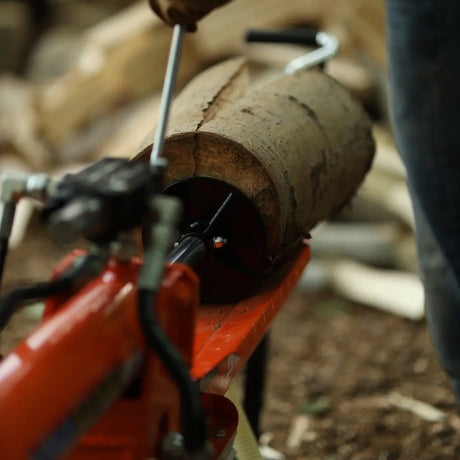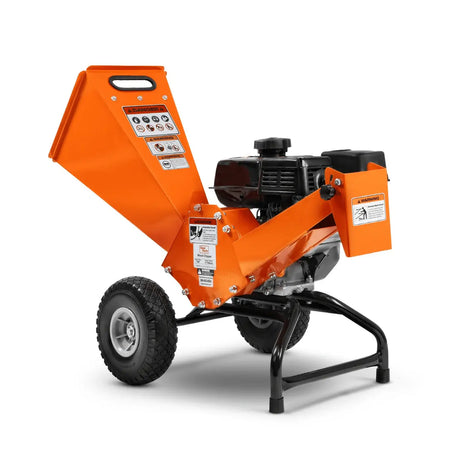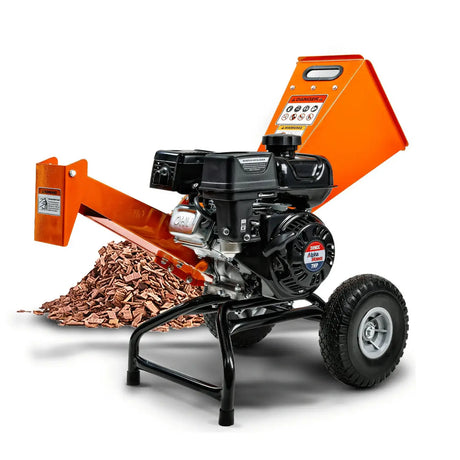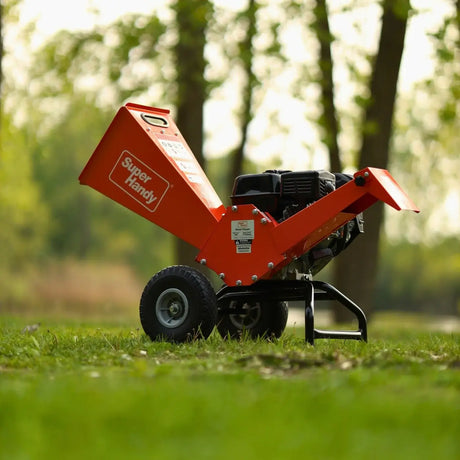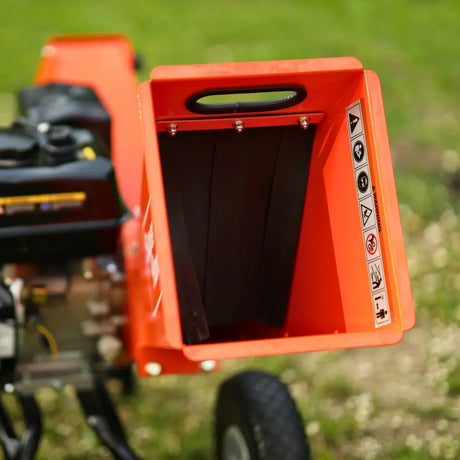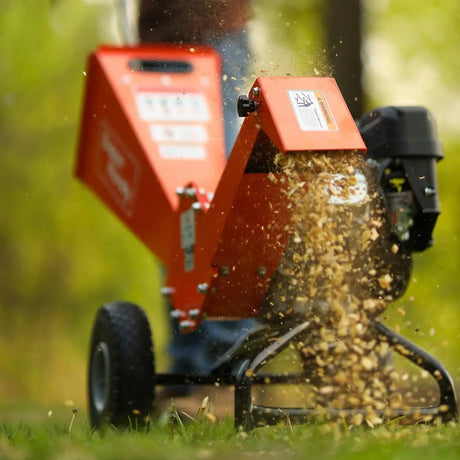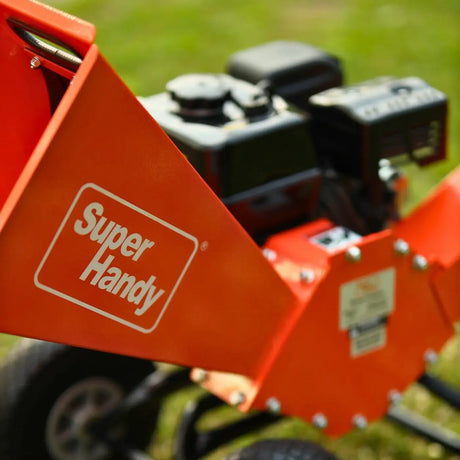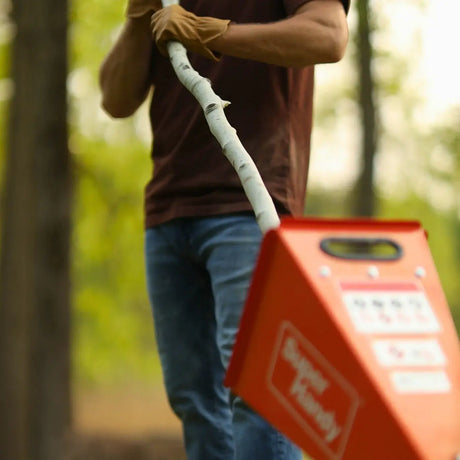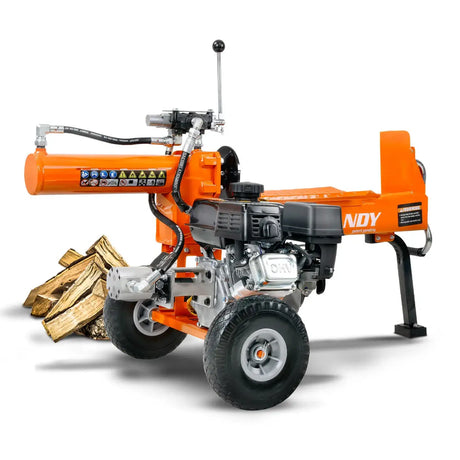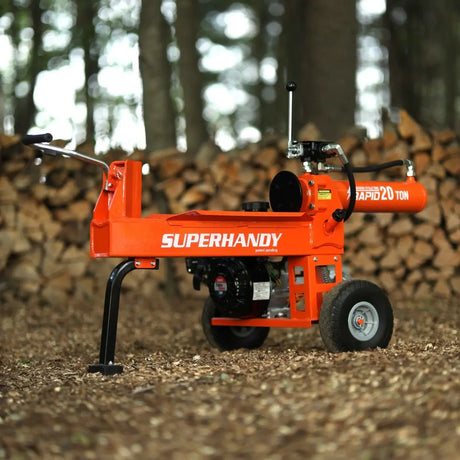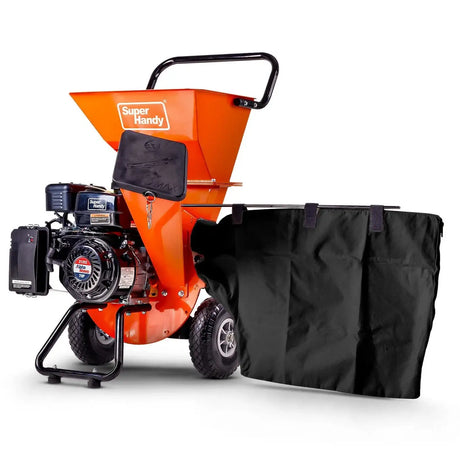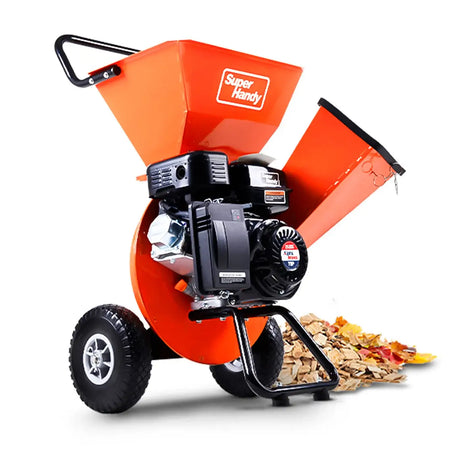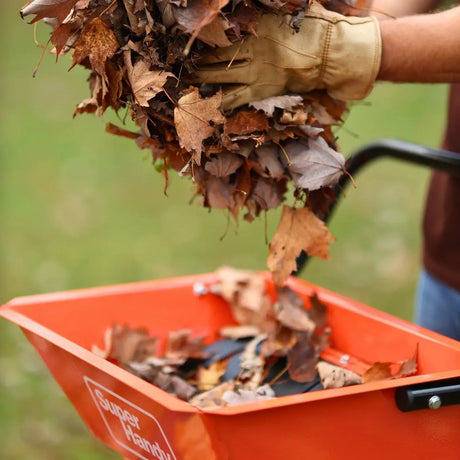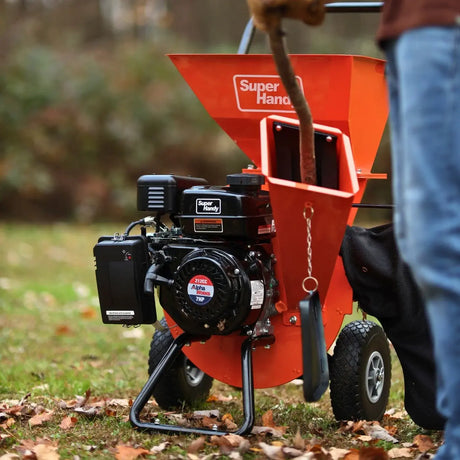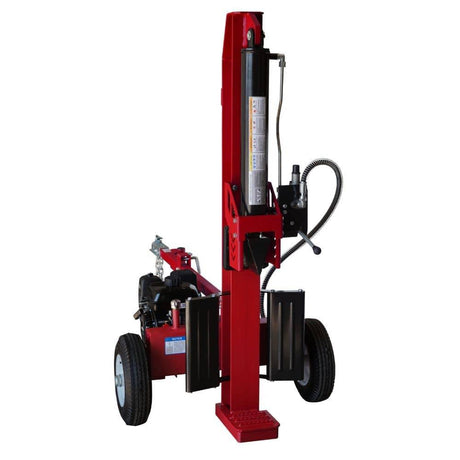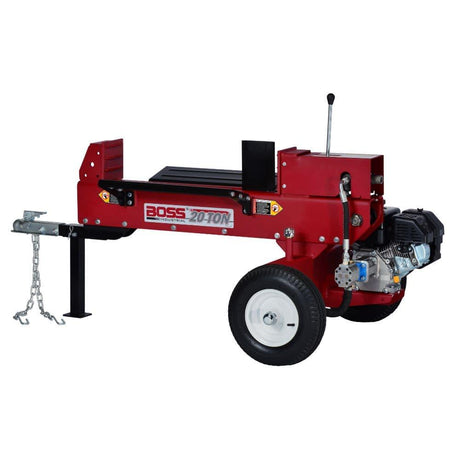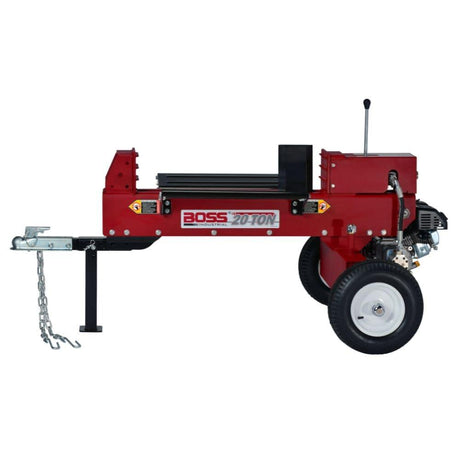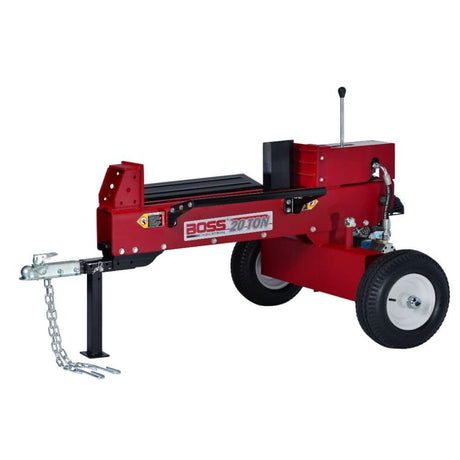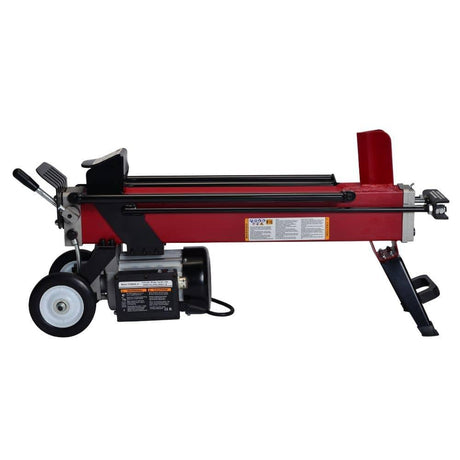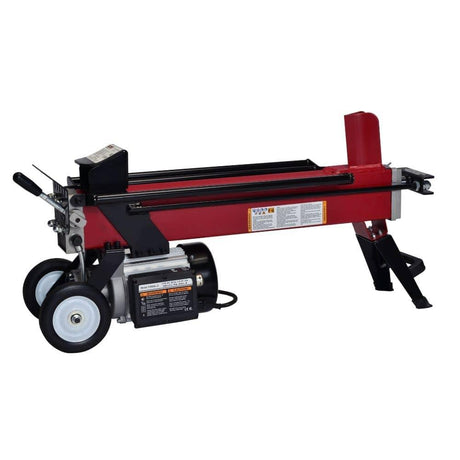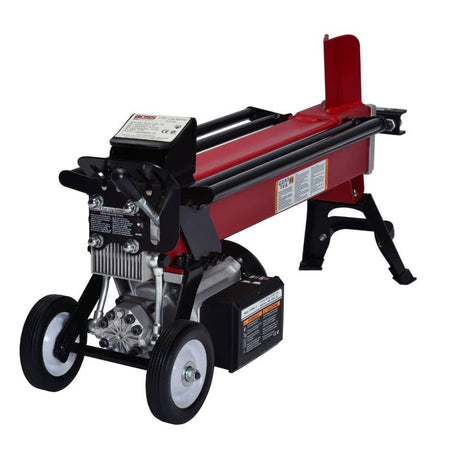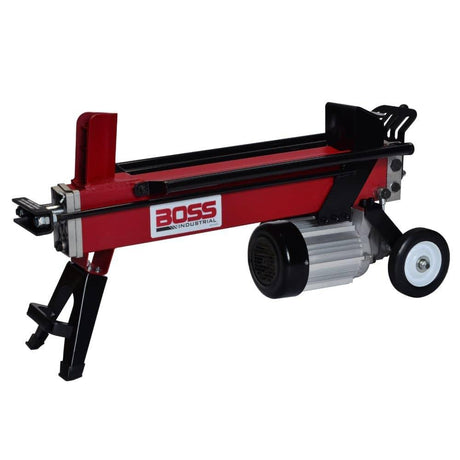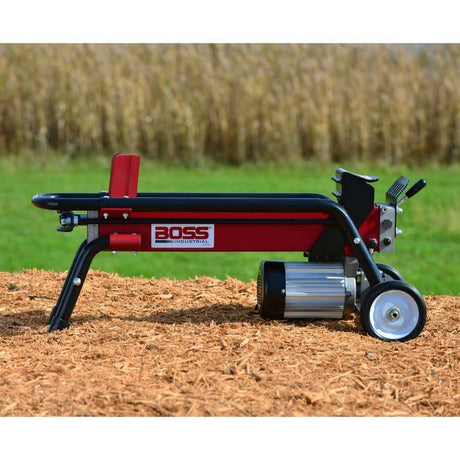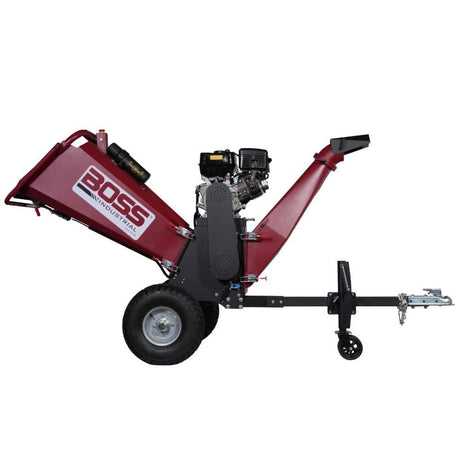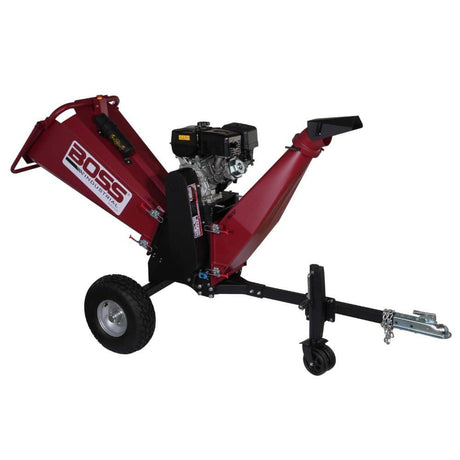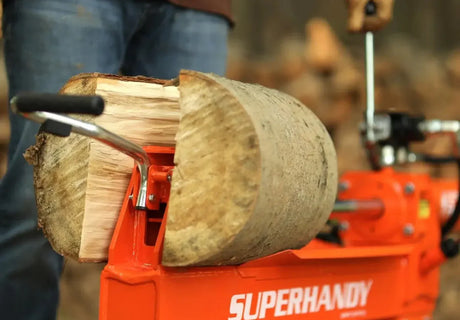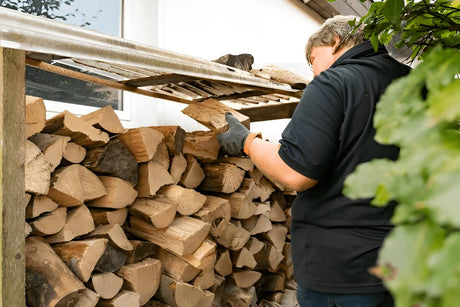Introduction: Why This Log Splitter Guide Matters
What You'll Learn and Who This Is For
If you've got logs to split and don't want to waste time (or money) on the wrong equipment, this guide is for you.
Whether you're a homeowner stocking up for winter, a landowner managing storm cleanup, or a firewood seller trying to boost productivity, we'll walk you through exactly what matters-and what doesn't-when buying a log splitter.
No fluff. No tech jargon. Just real-world guidance from someone who's been there, split that. Let's get you set up with the right tool for the job.
If you want to see the top options tested by experts, check out Top 13 Best Log Splitters for 2025: Electric, Gas, PTO & More Compared for detailed reviews.

How Log Splitters Work: The Mechanics
Understanding how a log splitter works helps you choose the right type for your setup. While all splitters aim to push a log into a steel splitting wedge with enough force to split it cleanly, the way they generate that force differs depending on the internal system. Let's take a closer look at the two most common mechanisms.
Hydraulic Systems: Slow, Strong, and Reliable
Hydraulic log splitters use fluid pressure to drive a metal ram. Here's how it works under the hood:
- A hydraulic pump moves oil through a system of hoses and valves.
- That oil builds pressure inside a hydraulic cylinder.
- The pressurized fluid pushes a piston (or ram) forward.
- The ram steadily forces the log into a wedge until it splits.
The motion is slow but consistent. Once the split is complete, the ram retracts and resets. Many machines include an auto-return valve to streamline that process.
This system is built to apply continuous, high-force pressure, which is why it can split through dense or knotty wood with ease.

Kinetic Systems: Fast, Efficient, and Low-Maintenance
Kinetic log splitters work on a completely different principle-stored energy and rapid release.
For a quick overview by use case, check out our chart on what log splitter you need based on use case.
Here's what's happening inside:
- A motor spins one or more flywheels that store rotational energy.
- When you engage the lever, that energy is transferred through a rack-and-pinion or belt-driven system.
- The stored momentum instantly drives the ram forward, slamming the log into the wedge.
- After the split, a spring or gear system quickly returns the ram.
Unlike hydraulics, this system doesn't rely on fluid or gradual pressure. It's all about burst energy and mechanical speed-which is why kinetic splitters reset much faster after each log.
Not sure which system to choose? Check out our comprehensive comparison guide of kinetic and hydraulic log splitters.
There are also manual log splitters that are used with a sledge hammer, but today we will focus on those with a motor.
Power Sources Explained: Gas vs. Electric
Both hydraulic and kinetic systems can be powered by either a gas engine or an electric motor. The mechanism inside stays the same-the only difference is how that system gets its energy.
You'll find more details on how gas vs. electric impacts performance, cost, and convenience later in this guide.
- Splitting kindling or small softwood logs
- Light use at a cabin, campsite, or fire pit
- People who don't mind a workout
Upsides:
- Cheap
- No fuel, no cords, no maintenance
- Compact and easy to store
Downsides:
- Slow and tiring
- Not suited for hardwoods or big rounds
- Requires strength and patience
Bottom line: They work-but only if you're okay doing most of the work yourself.
Electric Log Splitters (Clean, Quiet, Lightweight)
These are the go-to for casual users splitting wood in the garage, on the porch, or in a small backyard. Plug it in, hit the switch, and start splitting.
Electric models are quiet, easy to move, and don't require any gas or oil changes. If you're splitting seasoned wood under 12" in diameter, they'll handle it.
Best for:
- Homeowners splitting a few cords a year
- Indoor or suburban use
- Light-to-medium firewood tasks
Upsides:
- Low noise and no fumes
- Minimal maintenance
- Easy to start and store
Downsides:
- Needs an outlet (or generator)
- Not enough power for large, green, or knotted logs
- Slower cycle times than kinetic or heavy gas units
Bottom line: If you're keeping the fireplace stocked for the winter, electric makes it easy.

Gas Log Splitters (Powerful, Rugged, Field-Ready)
When you need raw power and full independence from the grid, gas-powered splitters are the workhorses. You'll find these on farms, job sites, and rural properties where the logs are big, heavy, or freshly cut.
Best for:
- Large or green hardwood logs
- Off-grid locations
- Frequent or high-volume splitting
Upsides:
- Tons of power
- Can be used anywhere
- Many offer vertical operation for big rounds
Downsides:
- Loud and emits fumes
- Requires engine maintenance (oil, fuel, filters)
- Heavier and more expensive than electric
Bottom line: When the wood is tough-or the pile is endless-gas is what you want. 👉 Want a deeper breakdown? See our full section on Gas vs. Electric for more guidance.

Key Features That Actually Matter
You've seen how log splitters work and the types available-but how do you decide which one is right for your yard, your workflow, and your firewood? These are the key features that make the biggest difference when it's time to buy.
| Log Diameter | 🌲 Softwood Dry / Green |
🌿 Medium Hardwood Dry / Green |
🪵 Hard Hardwood Dry / Green |
🧱 Very Hard Hardwood Dry / Green |
|---|---|---|---|---|
| 6 in. | 4+ tons / 7+ tons | 6+ tons / 9+ tons | 7+ tons / 10+ tons | 10+ tons / 16+ tons |
| 12 in. | 12+ tons / 18–20 tons | 15+ tons / 22+ tons | 20+ tons / 26+ tons | 22+ tons / 30+ tons |
| 18 in. | 20+ tons / 28–30 tons | 20+ tons / 30+ tons | 26+ tons / 34+ tons | 26+ tons / 34+ tons |
| 24 in. | 27+ tons / 34+ tons | 27+ tons / 34+ tons | 30+ tons / 34+ tons | 30+ tons / 34+ tons |
Splitting Force (Tonnage)
Tonnage is the muscle behind your splitter. It tells you how much force the ram applies to the log. More tons = more power.
Here's a quick rule of thumb:
- 6-10 tons → Dry softwood logs under 12"
- 15-22 tons → Seasoned hardwoods, up to 16-18"
- 25-35+ tons → Large, green, knotted, or frozen wood 20"+
If you're still unsure, check out our full Tonnage Guide for a deeper breakdown by species and log size.
Log Size Capacity - Diameter and Length Limits
Not every splitter can handle oversized rounds. Before buying, think about the wood you'll actually be splitting.
Most consumer-grade splitters are rated for:
- Log length: 16"-24"
- Log diameter: Up to 12" for light-duty, 24"+ for heavy-duty
If your woodpile includes big chunks of oak or elm, go bigger. Otherwise, a mid-range model should get the job done without overkill.
Cycle Time and Workflow Efficiency
Cycle time is how long it takes for the ram to move forward, split the log, and return. It directly impacts how fast you can work.
- Hydraulic splitters: Usually 12-20 seconds
- Kinetic splitters: 2-3 seconds or less
If you're working solo, slower isn't always bad-it gives you time to reposition. But if you're splitting with a partner or moving through a large stack, fast cycle time saves hours.
Bottom line: Fast = higher output. Slow = better control, especially for uneven logs.

Vertical vs. Horizontal Operation
Some splitters are horizontal only. Others offer vertical mode, which lets you roll large rounds underneath the wedge without lifting them. And there is even a 2-in-1 model that allows you to switch between vertical and horizontal.
Horizontal mode:
- Comfortable for smaller logs
- Easier to load if logs aren't too heavy
Vertical mode:
- Saves your back when working with big rounds
- Great for solo splitting without lifting
Look for a model that gives you both if you're working with mixed wood sizes.

Portability and Tow Options
Moving your splitter around matters more than you think-especially if you're working across a big property or storing it in a tight spot.
Key things to consider:
- Wheels: Solid rubber is fine for garages; pneumatic tires are better for dirt, gravel, or uneven terrain
- Handle design: Some are awkward to grip or balance
- Tow kits: If you're hauling behind an ATV or lawn tractor, make sure it's hitch-compatible
A heavy splitter that's hard to move gets used less. Plain and simple.
Safety Features (2-Handed Controls, Cradles)
Log splitters aren't dangerous if they're used correctly-and the best models help you stay safe.
Look for these features:
- Two-handed operation: You must use both hands to activate the ram, keeping fingers out of danger
- Log cradles or side rails: Catches the split wood so it doesn't fall on your feet
- Kill switch or safety lock: Handy for emergencies or when kids are nearby
Don't cut corners here. Safety features are worth every penny.
Storage and Ease of Use
A splitter might check all the boxes… until you try to fit it into your garage.
Think about:
- Size when stored: Does it fold upright or take up floor space?
- Startup method: Electric = instant; gas may need a few pulls
- Cleaning: Open frames collect less sap and debris
- Weight and maneuverability: Can you move it solo if needed?
If it's a pain to haul out and start, you won't use it nearly as often. Look for a model that works with your storage and setup-not against it.

Gas vs. Electric Log Splitters: What's Better for You?
Choosing between gas and electric log splitters isn't just about price or convenience-it's about how and where you plan to use the machine. Both options work well when matched to the right job. Let's break it down clearly so you can decide what's right for your firewood routine.
Power and Performance
If you're splitting big rounds, green wood, or hardwoods like oak or hickory, gas-powered splitters give you the force to push through.
- Gas models typically deliver 20-40+ tons of force
- Designed for larger, tougher logs
- Better suited for long sessions and heavy-duty work
Electric splitters are quieter and cleaner-but come with limitations.
- Most range from 6-10 tons
- Great for dry, seasoned logs under 12" in diameter
- Perfect for light-to-moderate home use
Bottom line: Gas = raw power for rough wood. Electric = clean, simple, and ideal for smaller jobs.
Maintenance Differences
Gas engines need regular attention-just like your mower or chainsaw.
With gas-powered models, you'll deal with:
- Oil changes
- Air filters
- Spark plugs
- Fuel stabilizers (if stored long term)
Electric splitters are low-maintenance by comparison. There's no engine to tune up-just basic care like checking hydraulic fluid, cleaning the ram, and storing it dry.
If you want fewer moving parts to worry about, electric wins here.
Where You Can (and Can't) Use Them
Electric splitters are quiet, fume-free, and safe to use indoors or in a garage. That's a big plus for suburban users or anyone splitting wood during bad weather.
Gas models must be used outdoors. They're loud, produce exhaust, and require ventilation. But in return, they give you full mobility-no cords, no power source required.
Summary:
- Electric = Great for garages, basements, patios
- Gas = Best for fields, woods, or anywhere off-grid
Cost to Run + Long-Term Value
Electric splitters are cheaper to run day-to-day. You plug them in, and that's it. Energy costs are minimal, and upkeep is simple.
Gas splitters cost more over time. You'll spend on:
- Fuel
- Oil
- Routine engine maintenance
- Occasional repairs
But gas models hold their resale value better, especially in rural areas where that power is always in demand.
If you're using your splitter often, that resale value (and the ability to work anywhere) might be worth the trade-off.
Summary Use Cases (Suburban, Rural, Commercial)
Here's a quick guide based on how and where you'll use the machine:
| Feature | Gas Splitter | Electric Splitter |
|---|---|---|
| Power | High (20–40+ tons) | Moderate (6–10 tons) |
| Mobility | Anywhere (off-grid, job sites) | Needs outlet or generator |
| Noise & Emissions | Loud, emits fumes | Quiet and fume-free |
| Maintenance | Engine upkeep, oil, filters | Minimal—just basic cleaning |
| Indoor Use | ❌ Not safe indoors | ✅ Garage/basement safe |
| Upfront Cost | Higher (especially heavy-duty models) | Lower to mid-range |
| Best For | Big logs, green wood, frequent use | Light-to-medium firewood, suburban homes |
Final takeaway: If your wood is clean, your space is tight, and convenience matters-go electric. If your logs are gnarly, your power is limited, or you're splitting serious volume-gas is the better tool for the job.
👉 Already decided on a type? Scroll back to our Log Splitter Types section to find the one that fits your setup.

How Much Do Log Splitters Cost?
A log splitter isn't just a tool-it's an investment. But like anything, the real cost isn't just the sticker price. Let's break down what you can expect to spend up front and over time.
Price by Type and Tonnage
Here's a quick ballpark based on splitter type and power level:
| Splitter Type | Typical Price Range | Use Case Example |
|---|---|---|
| Manual | $100 – $300 | Kindling or light home use |
| Electric (6–10 ton) | $300 – $1,200 | Small-to-medium logs, suburban settings |
| Gas (20–40+ ton) | $900 – $2,500+ | Rural, off-grid, commercial firewood use |
| Kinetic | $1,200 – $2,800 | High-speed splitting of seasoned firewood |
More tonnage = more dollars. If you're dealing with green hardwood or oversized rounds, expect to spend on the higher end.
Fuel and Maintenance Costs Over Time
Your upfront price is just part of the equation. What you'll pay after the purchase depends largely on the power source.
Electric splitters:
- Very low cost to run
- Plug into standard outlet = pennies per session
- Minimal maintenance (maybe hydraulic fluid every few seasons)
Gas splitters:
- Ongoing fuel costs (gas and oil)
- Needs regular maintenance: spark plugs, filters, oil changes
- You'll likely spend $50-$150/year if used regularly
Kinetic models:
- Lower maintenance than gas
- No hydraulic oil, but may require belt or gear servicing
If you don't want to tinker with small engines or store fuel, that's something to factor in.
Hidden Costs (Storage, Accessories, Time)
There are a few sneaky expenses people don't always plan for:
Storage:
- Larger models take up garage space
- Outdoor storage may require a cover or shed
Accessories:
- Log cradles, covers, ramps, or stands add up
- Some models don't include these in the base price
Time value:
- Slower machines may cost less, but eat up more of your weekend
- A faster splitter might pay for itself in labor saved
Bottom line: The cheaper model isn't always cheaper in the long run.
Resale Value and Lifespan
A good splitter can last 10-15+ years with regular care. But not all hold their value equally.
- Gas models tend to have the best resale value, especially in rural areas
- Electric splitters are harder to resell, but they often last just as long if kept indoors
- Manual splitters don't break easily-but they're rarely in demand used
- Kinetic models are more niche, but if well-maintained, they command solid secondhand prices
Pro tip: Keep your receipts, maintenance log, and manual. It helps with resale-and keeps your machine running smoother over time.

Which Log Splitter is Best for You?
You've seen the options, the features, and the cost breakdowns-but let's make it easy. Here's a straightforward guide to help you match the right splitter to your lifestyle, workload, and woodpile.
| Use Case | Best Option | Why It Works |
|---|---|---|
| Suburban Homeowner | Electric | Quiet, compact, safe to use indoors |
| Weekend Firewood Splitter | Electric or Small Gas | Depends on log size and storage options |
| Rural Property Owner | Gas | Power, mobility, and off-grid flexibility |
| Commercial/High Volume | Gas | Built for long sessions and large wood loads |
| Garage/Indoor Use | Electric | No fumes, safe in enclosed areas |
Best for Casual Firewood Users
If you're splitting a few cords a year for your wood stove, backyard fire pit, or fireplace, you don't need industrial power. You just need something clean, quiet, and easy to store.
Top picks:
- Electric splitters (6-10 tons)
- Lightweight kinetic models for faster splits
Why they work:
- Plug-and-play simplicity
- Quiet enough for neighborhood use
- No fuel, no fumes, and minimal maintenance
- Compact size fits garages and sheds
Watch out for:
- Limited log size (best for dry wood under 12")
- Needs access to power or extension cords
Best for Rural & Off-Grid Homeowners
If you live on acreage, heat your home with wood, or split firewood regularly through the fall and winter, you'll want more muscle-and more mobility.
Top picks:
- Gas-powered hydraulic splitters (20-30+ tons)
- Mid-size kinetic models (for seasoned wood)
Why they work:
- Can split large, green, or knotty logs
- No reliance on electricity-works anywhere
- Often includes vertical mode for heavy rounds
- Durable enough for regular seasonal use
Watch out for:
- Louder operation
- Requires fuel and engine upkeep
- Needs more storage space
Best for High-Volume and Commercial Use
Running a firewood business? Clearing land? Heating multiple properties? You need a machine that's built to take a beating and keep going.
Top picks:
- Heavy-duty gas hydraulic splitters (30-40+ tons)
- High-end kinetic splitters with fast cycle times
Why they work:
- Built for non-stop work
- Handles oversized and irregular logs
- Faster output = more wood in less time
- Tow-behind designs for jobsite mobility
Watch out for:
- Higher upfront cost
- Takes up more room
- Not ideal for small properties or light-duty use
Final tip: Don't overbuy-but don't underpower either. Match your splitter to your wood and your routine. The right fit makes all the difference.

Conclusion: Choose Smart, Split Easy
Final Thoughts Based on Your Needs
At the end of the day, there's no one-size-fits-all splitter. The best one is the one that fits your wood, your workflow, and your space.
If you're splitting a few cords of seasoned wood in your backyard, an electric or small kinetic model makes life simple. If you're deep in the woods handling green, gnarly logs, gas-powered hydraulics will never let you down. And if you're running a firewood business? You already know-speed, power, and durability are non-negotiable.
It's not about owning the biggest machine on the block-it's about getting one that works hard with you, not against you.
Key Takeaways Before You Buy
Here's a quick recap to guide your decision:
- Match tonnage to your wood type - Too little power = frustration. Too much = wasted budget.
- Pick the right power source - Electric is clean and quiet. Gas is rugged and go-anywhere.
- Know your space - Storage, portability, and access matter more than you think.
- Think about how often you'll use it - Occasional users should keep it simple. Frequent users? Go durable.
- Don't overlook safety and maintenance - A well-maintained, two-hand-operated splitter lasts longer-and keeps you safer.
The right log splitter doesn't just save you effort-it changes how you look at firewood season. Buy smart, split easy, and let your machine do the heavy lifting.



